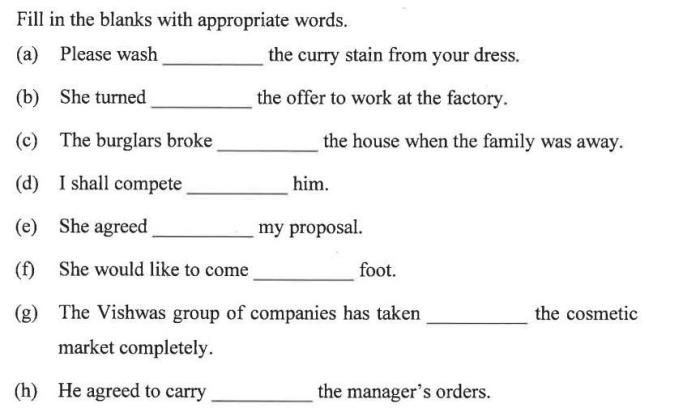Letrs check for understanding answers – Embarking on a journey to explore the realm of letter checks for understanding answers, we delve into their profound impact on comprehension and retention. Letter checks stand as invaluable tools, fostering a deeper understanding of concepts and solidifying knowledge through targeted practice.
These meticulously designed exercises not only enhance students’ grasp of subject matter but also serve as effective assessment measures, providing educators with valuable insights into students’ progress. As we delve into the intricacies of letter checks, we uncover their diverse applications, best practices, and the transformative role technology plays in amplifying their effectiveness.
Letter Checks
Letter checks are a valuable tool for educators to assess students’ understanding of a text. By asking students to identify specific letters or letter combinations in a text, teachers can determine whether students have read the text carefully and understood its content.
Letter checks can also help students to focus their attention on the text and to identify important information.
How Letter Checks Foster Comprehension and Retention
There are several ways in which letter checks can foster comprehension and retention. First, letter checks require students to actively engage with the text. By searching for specific letters or letter combinations, students must read the text carefully and pay attention to its details.
This active engagement helps students to better understand the text and to remember its content.
Second, letter checks can help students to identify important information in the text. By focusing on specific letters or letter combinations, students are more likely to notice important words, phrases, and concepts. This increased awareness of important information can help students to better understand the text and to retain its content.
Examples of Effective Letter Checks
There are many different ways to use letter checks in the classroom. Some effective letter checks include:
- Asking students to identify the first and last letter of each word in a sentence.
- Asking students to identify all the words in a paragraph that contain a specific letter or letter combination.
- Asking students to identify all the words in a text that are spelled with a specific letter or letter combination.
Types of Letter Checks

Letter checks are a crucial step in the document creation process, ensuring the accuracy and professionalism of correspondence. Various methods are employed for letter checks, each with its advantages and limitations.
The choice of letter check method depends on factors such as the importance of the document, the level of detail required, and the available resources.
Manual Letter Check
Manual letter checks involve a thorough review of the letter by an individual or a team of individuals. This method allows for a detailed examination of the letter’s content, formatting, and overall presentation.
Advantages
- Thorough and comprehensive
- Allows for the identification of subtle errors
- Provides an opportunity for feedback and improvement
Limitations
- Time-consuming and labor-intensive
- Relies on the expertise and attention to detail of the reviewer(s)
- Can be subjective and prone to human error
Automated Letter Check
Automated letter checks utilize software tools to analyze the letter’s content and formatting. These tools can identify common errors such as spelling, grammar, and punctuation mistakes.
Advantages
- Fast and efficient
- Can be integrated into the document creation process
- Provides objective and consistent results
Limitations
- May not detect all errors, especially those related to context or tone
- Relies on the accuracy and comprehensiveness of the software used
- Can be expensive to implement and maintain
Hybrid Letter Check
Hybrid letter checks combine manual and automated methods. This approach involves using software tools for initial screening and then manually reviewing the letter for more complex errors and issues.
Advantages
- Combines the benefits of both manual and automated checks
- Provides a balance between efficiency and accuracy
- Can be tailored to specific requirements
Limitations
- Can be more time-consuming than automated checks
- Relies on the expertise of the manual reviewer(s)
- May require additional resources and coordination
Letter Check Design and Implementation

Designing and implementing effective letter checks is crucial for ensuring the accuracy and integrity of written communication. To achieve this, key considerations must be taken into account, including:
Key Considerations
- Purpose and Scope:Clearly define the purpose and scope of the letter check, ensuring it aligns with the organization’s objectives and communication goals.
- Target Audience:Identify the intended audience for the letter check and tailor its design and implementation accordingly, considering their level of understanding and familiarity with the subject matter.
- Format and Structure:Determine the appropriate format and structure for the letter check, considering factors such as length, complexity, and the need for visual aids or interactive elements.
- Content and Language:Ensure the letter check covers all necessary content and uses clear and concise language that is easily understood by the target audience.
- Evaluation Criteria:Establish clear evaluation criteria to assess the effectiveness of the letter check, including factors such as accuracy, completeness, and timeliness.
Using Letter Checks for Assessment
Letter checks serve as valuable assessment tools for both formative and summative purposes. They provide educators with insights into students’ understanding of concepts and their ability to apply knowledge.
Formative Assessment
In formative assessment, letter checks are employed to monitor student progress throughout a learning module or unit. By assessing student responses to specific questions, educators can identify areas where students are struggling and provide timely feedback to enhance comprehension.
Summative Assessment, Letrs check for understanding answers
Letter checks are also beneficial for summative assessment, which evaluates student learning at the end of a learning cycle. By assessing student responses across multiple letter checks, educators can gauge overall understanding of the material and assign grades that reflect student achievement.
Interpreting Letter Check Results
When interpreting letter check results, educators should consider the following:
- Student understanding:The number of correct responses indicates the student’s grasp of the concept being assessed.
- Common errors:Identifying common errors among students can reveal areas where the instruction or materials need improvement.
- Individual student needs:Letter check results can help educators tailor instruction to meet the specific learning needs of each student.
Letter Checks in Different Educational Settings
Letter checks are a versatile assessment tool applicable across diverse educational settings. Their adaptability allows for customization to align with specific subject areas and learning objectives.
Primary Education
In primary education, letter checks serve as an effective means to assess students’ foundational literacy skills. They can evaluate letter recognition, letter formation, and letter-sound correspondence.
Secondary Education
At the secondary level, letter checks can be tailored to assess subject-specific vocabulary and concepts. For instance, in science, letter checks can evaluate students’ understanding of scientific terms and definitions.
Higher Education
In higher education, letter checks can be used to assess critical thinking and analytical skills. They can require students to analyze and interpret complex texts, identify key concepts, and draw inferences.
Diverse Educational Contexts
Letter checks have been successfully implemented in various educational contexts. For example, in online learning environments, letter checks can be used as asynchronous assessments, providing students with flexibility and time to complete the task.
Letter Checks and Technology: Letrs Check For Understanding Answers
The integration of technology into letter checks has significantly enhanced their effectiveness and accessibility. Technology-based letter checks provide various benefits, including:
- Enhanced Efficiency:Automated scoring and feedback systems streamline the assessment process, reducing time and effort for both educators and students.
- Improved Accessibility:Online letter checks enable students to complete assessments remotely, making learning more flexible and convenient.
- Data Analysis and Reporting:Technology allows for the collection and analysis of data from letter checks, providing insights into student progress and areas for improvement.
Innovative Letter Check Tools and Applications
Numerous innovative letter check tools and applications have emerged, each offering unique features and capabilities. Some notable examples include:
- LetterCheck:An online platform that provides automated scoring, feedback, and progress tracking for letter checks.
- GradeCraft:A comprehensive assessment platform that includes letter check functionality, along with other assessment tools.
- Edpuzzle:A video-based learning platform that incorporates letter checks into its interactive lessons.
These tools empower educators to create, deliver, and evaluate letter checks with greater ease and efficiency, ultimately enhancing the assessment experience for both teachers and students.
Letter Checks and Inclusivity

Letter checks are an important assessment tool, but it is essential to ensure that they are inclusive and accessible to all learners. This means adapting letter checks to meet the needs of diverse learners, including those with disabilities, language barriers, or other learning challenges.
Strategies for Adapting Letter Checks
- Use clear and concise language.Avoid using jargon or technical terms that may be unfamiliar to some learners.
- Provide multiple formats.Offer letter checks in different formats, such as print, digital, or audio, to accommodate different learning styles.
- Use assistive technology.Provide assistive technology, such as screen readers or text-to-speech software, for learners with disabilities.
- Allow for extra time.Give learners with disabilities or language barriers extra time to complete letter checks.
- Provide feedback in multiple languages.Translate feedback into multiple languages to ensure that all learners can understand their results.
Examples of Inclusive Letter Check Practices
- A teacher creates a letter check that is available in both English and Spanish.
- A teacher provides a screen reader for a student with a visual impairment.
- A teacher gives a student with a learning disability extra time to complete a letter check.
- A teacher provides feedback to a student in their native language.
- A teacher uses a variety of assessment formats to accommodate different learning styles.
Top FAQs
What are the primary benefits of using letter checks?
Letter checks offer a multitude of benefits, including enhanced comprehension, improved retention, and the ability to pinpoint areas where students may need additional support.
How can letter checks be tailored to different subject areas?
Letter checks can be easily adapted to suit various subject areas by incorporating content-specific vocabulary, concepts, and skills.
What strategies can be employed to ensure inclusivity in letter checks?
To promote inclusivity, letter checks can be modified to accommodate diverse learning styles, language proficiencies, and cultural backgrounds.